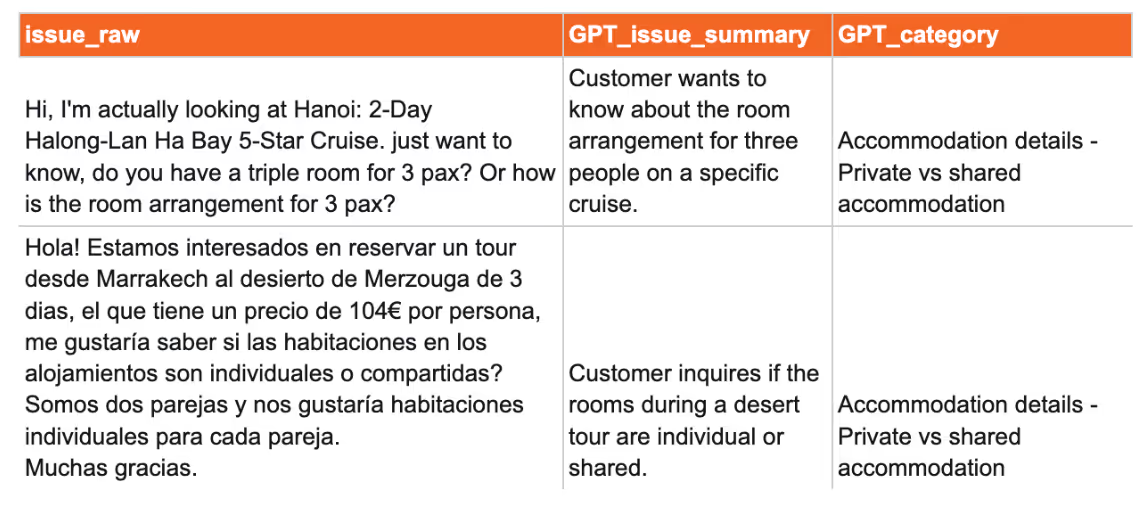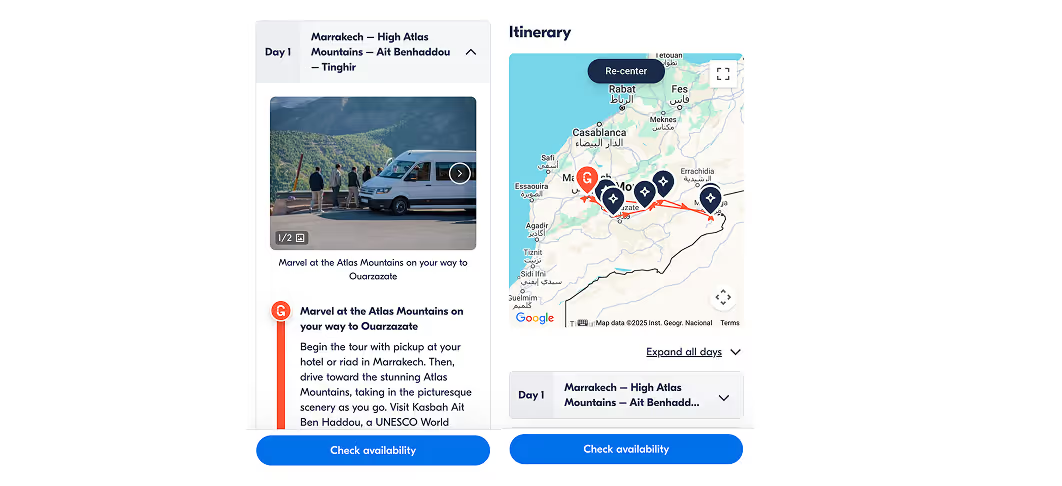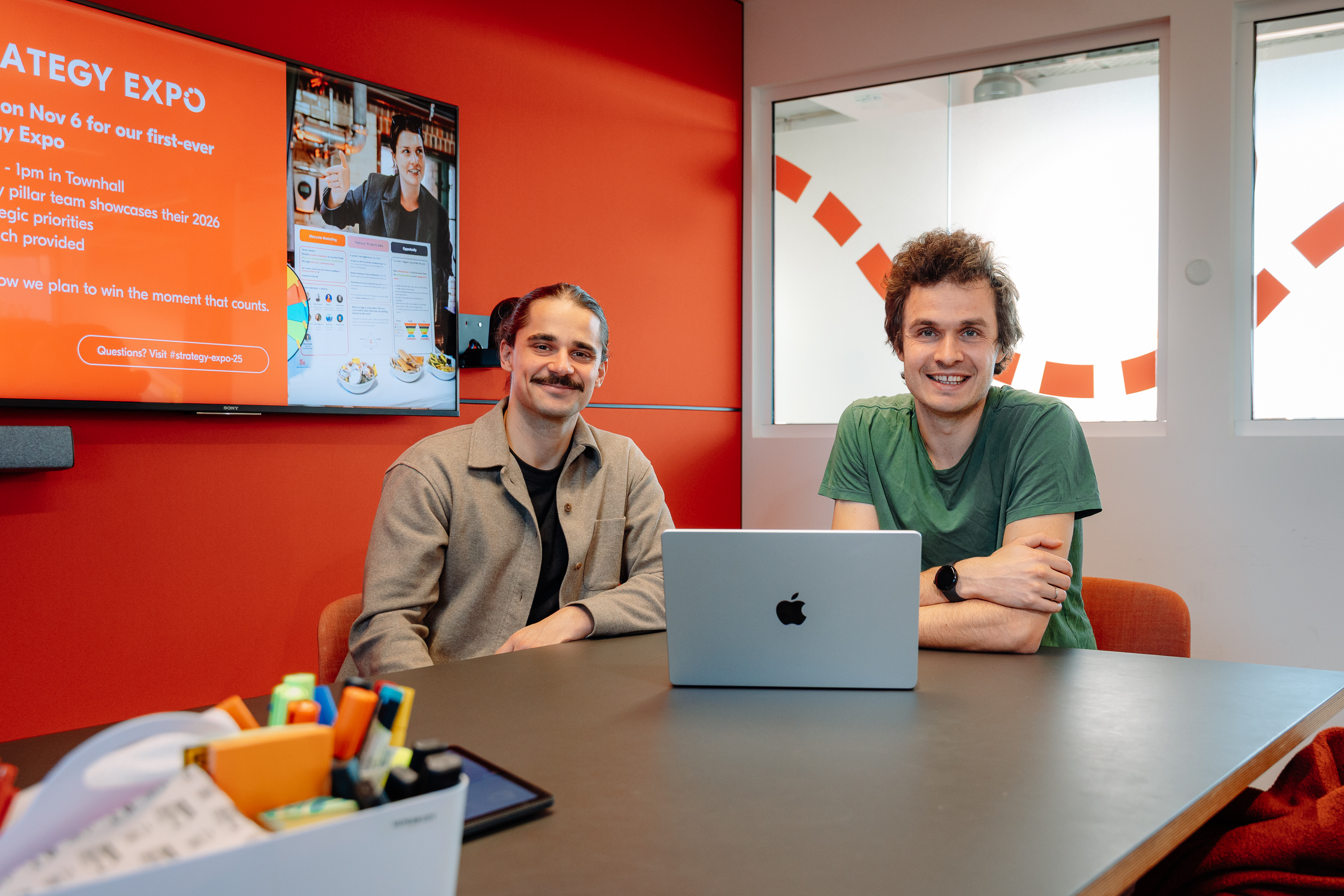From AI to Adventure: Transforming multi-day tours with data-driven insights
Discover how Data Analysts at GetYourGuide use AI to transform customer feedback into actionable insights, helping designers create engaging, informative multi-day tour pages. Learn how AI-driven analysis streamlines understanding of customer needs, enhances collaboration, and sets new standards for customer-centric travel content.

Key takeaways:
At GetYourGuide, our data analysts are the masterminds who make our product extraordinary. By leveraging AI, they transform feedback into powerful insights, enabling our design teams to create product pages that give our travelers all the information they need to book unforgettable adventures.
In this blog post, you’ll learn how we use AI to revolutionize our approach when tackling customer challenges.
{{divider}}
The challenge with multi-day trip product pages
Multi-day tours, such as camping in the Sahara or hiking through the Andes, are often packed with a variety of features that make them the “trip of a lifetime.” These experiences require significant time and financial commitments from the traveler, making them far from impulsive bookings.
However, our preexisting content for these tours was underwhelming. It was often listed with a wall of text and lacked engaging design and substance. This was a barrier to potential customers and needed to be improved.
.avif)
The task for our design team? Make the content more engaging by understanding precisely what customers want to know before booking and putting it front and center. This proved challenging using traditional methods like competitor analysis, user research, and supplier consultations — they offered some insights, but were limited by small sample sizes and lengthy processes.
As analysts, our primary challenge was to efficiently gather a comprehensive list of customer concerns that the new content could effectively address, prioritizing the most critical information for travelers considering multi-day tours.
Becoming AI-nalysts
To tackle this challenge, we tapped into two underutilized data sources: pre-booking supplier contacts and customer care tickets to see what kinds of questions and complaints customers had about multi-day trips. These resources provided access to the voices of thousands of potential customers, giving us insight into the real problems faced that prevent them from making a booking.
By leveraging this data, we developed a process using AI to identify common themes and quantify them for prioritization. This allowed us to better understand our customers’ needs and address them comprehensively.

Our analysis pipeline involved cleaning customer care tickets and supplier emails in Databricks, using the OpenAI API to model the data, and transforming it into actionable insights. We began by gathering all conversations between suppliers and potential customers, focusing specifically on those related to multi-day tours. A large language model (LLM) via the OpenAI API was used to simplify each conversation. These simplified dialogues were then processed through another LLM to extract common topics and themes.
Finally, a third LLM classified each conversation according to the identified themes. This systematic approach enabled us to conduct a straightforward data analysis task, resulting in a prioritized list of insights.
Content powered by customer insights
The results of our AI-driven approach were remarkable. What was once a time-consuming task, even with a small sample, could now be executed thousands of times over in minutes. Customer issues, regardless of language, were simplified, categorized, and prioritized efficiently. For instance, a customer inquiry about room arrangements on a specific cruise was translated into actionable insights regarding accommodation details, whether private or shared.

Using these insights, we have already updated 100 tours with more customer-centric content. What was once a wall of text is now transformed into detailed and visually appealing itineraries, complete with maps, images of transport, accommodation, and more — all elements requested by customers.

Building bridges between analysts and designers
Presenting designers with actual customer problems and their magnitude was a refreshing change. This analysis revealed new problems we hadn't previously considered and validated existing assumptions from both designers and user research.
“This analysis really helped to identify any gaps in missing information to make sure we were surfacing information that users need,” and “increased our confidence in our own assumptions” - Devang Patel (Senior Product Designer) & Kaitlyn Luckow (Senior Content Designer)
This collaborative approach reshaped how analytics and UX teams work together, turning siloed insights into shared problem-solving. It shifted us from reactive to proactive, setting a new standard for collaboration and the quality of insights we deliver. Armed with feedback for suppliers, we enabled them to build customer-centered itineraries, moving from guesswork to customer-driven content and setting a new bar for relevance and clarity.
Learn more about our latest product launch for Suppliers.
Final remarks
Looking to the future, integrating AI in data analysis opens exciting possibilities for tackling customer problems and enhancing collaboration. Special thanks to Alessandro Artorelli, Senior Data Analyst, for his contributions to this project.
For data analysts at GetYourGuide, this is just the beginning!
AI has not only streamlined our processes but also fostered a culture of collaboration across departments, ensuring that our customers receive the most relevant and engaging content possible. As we continue to innovate, we remain committed to using AI as a tool to enhance customer satisfaction and drive success.
Want to be a part of the team revolutionizing the way millions travel? Check out our open roles.






